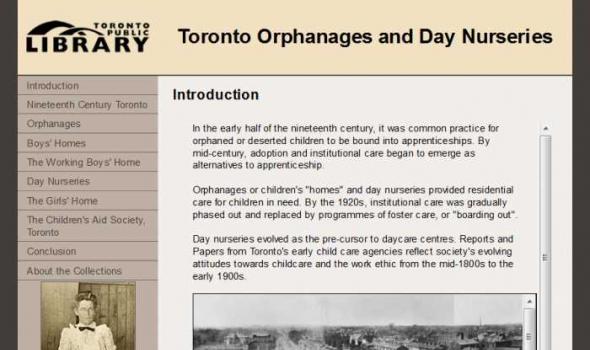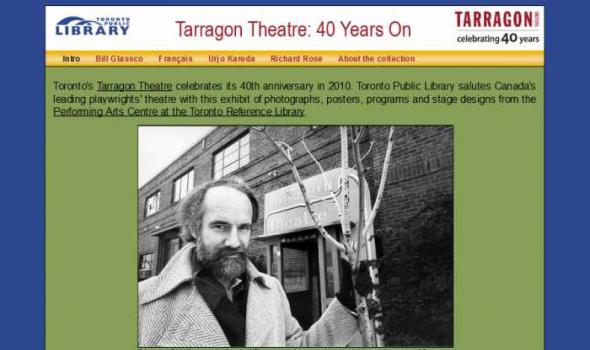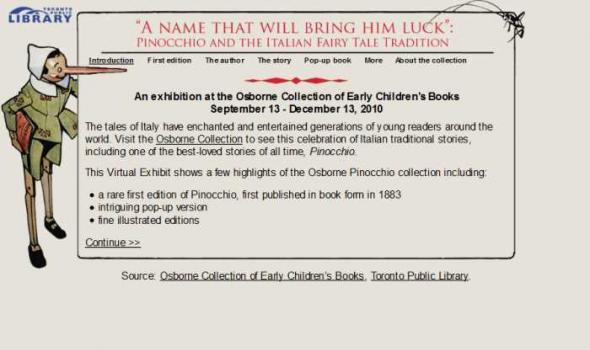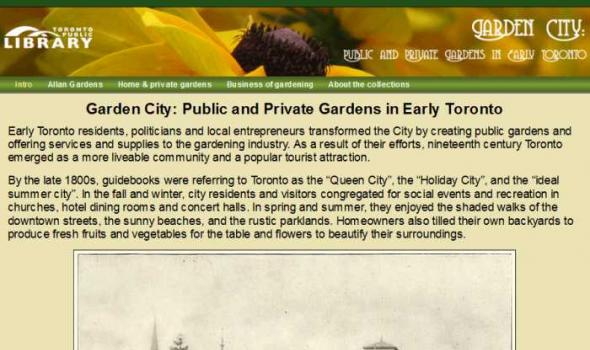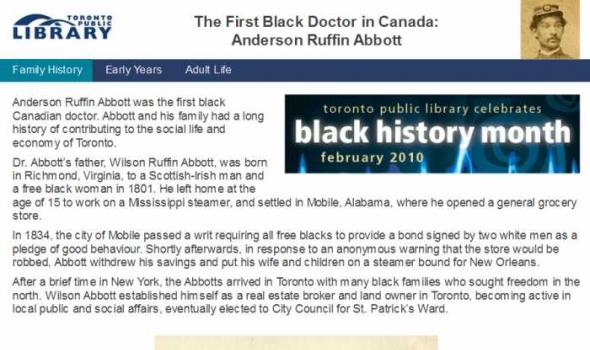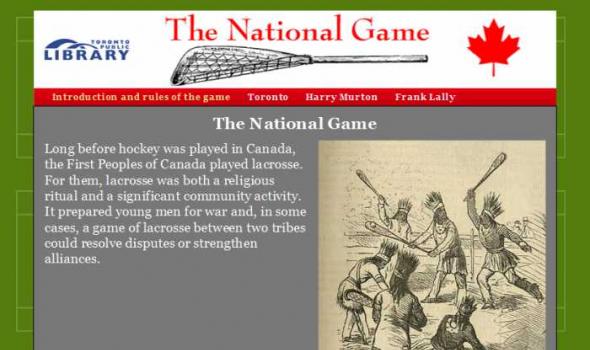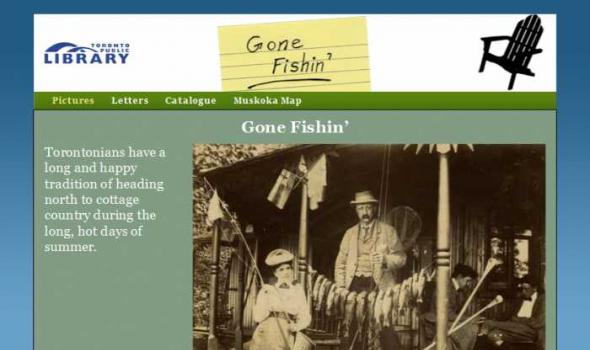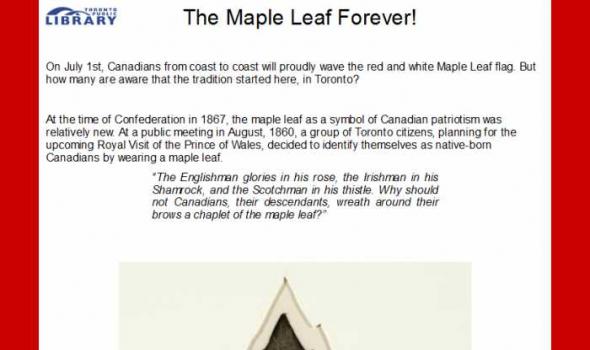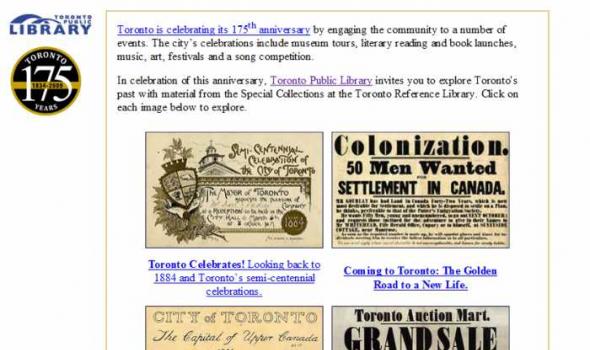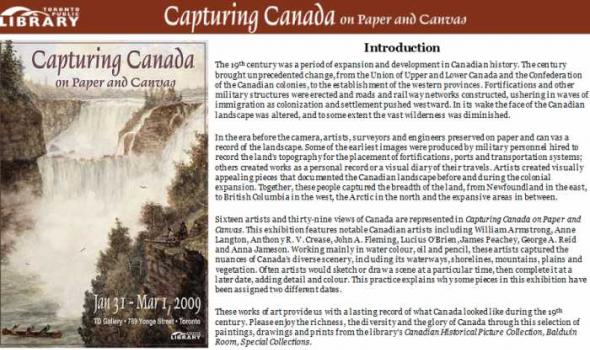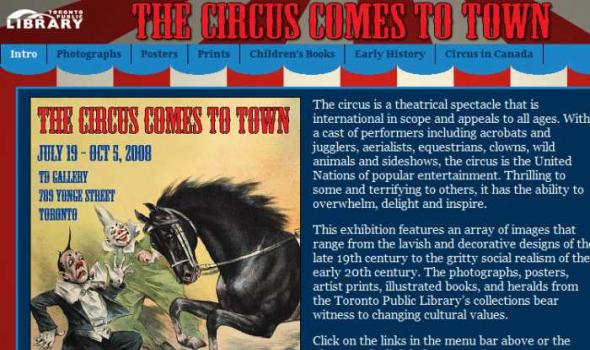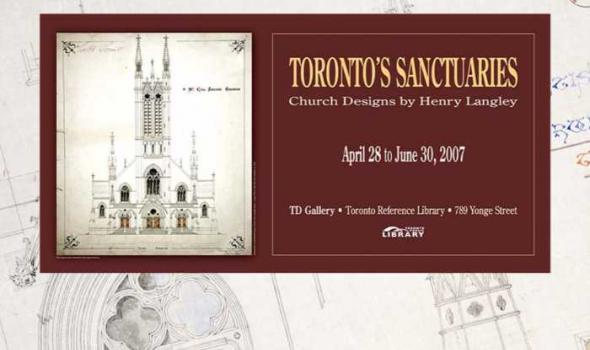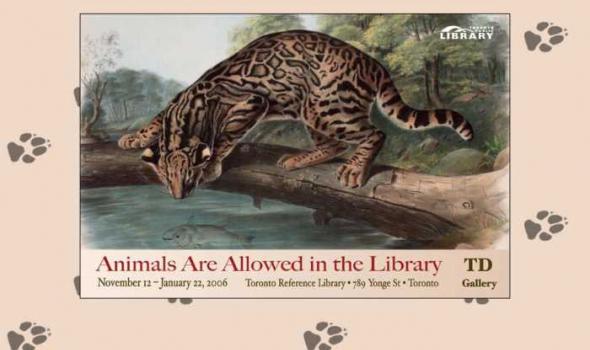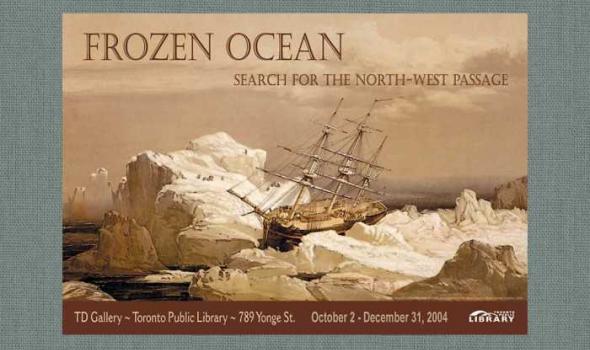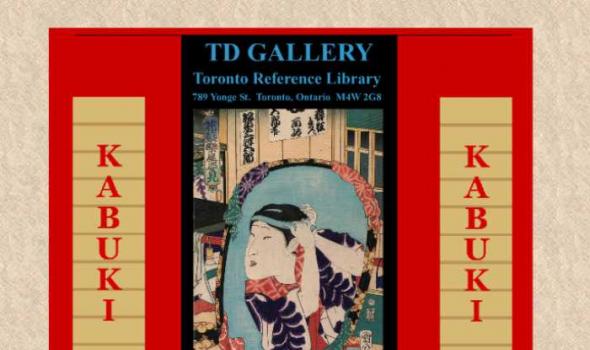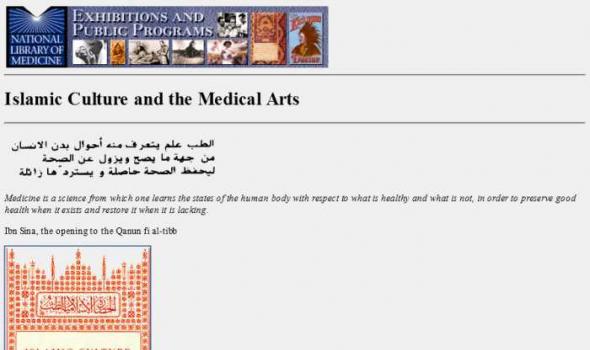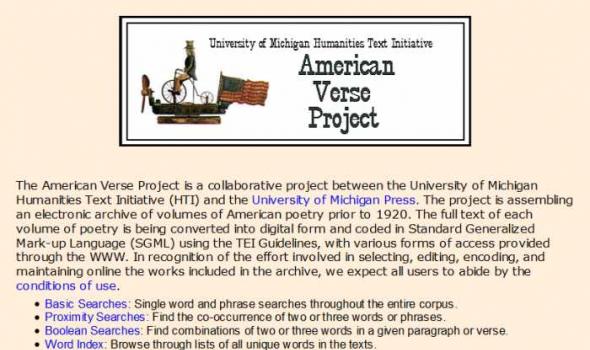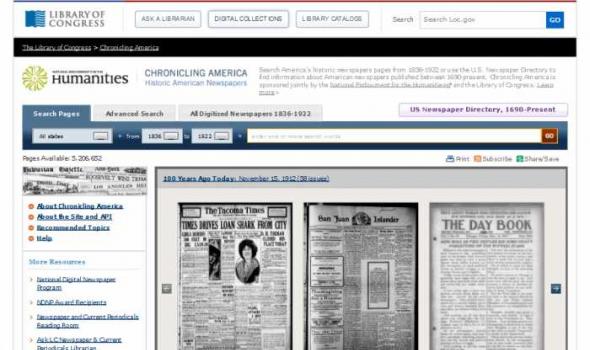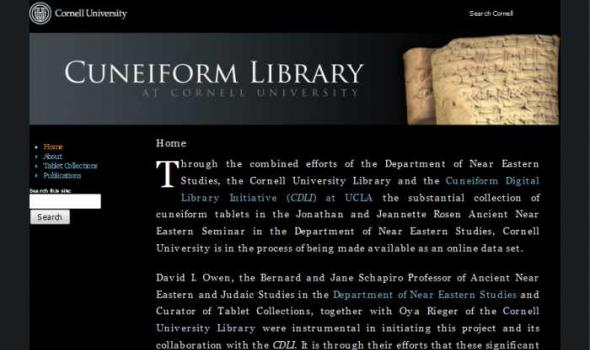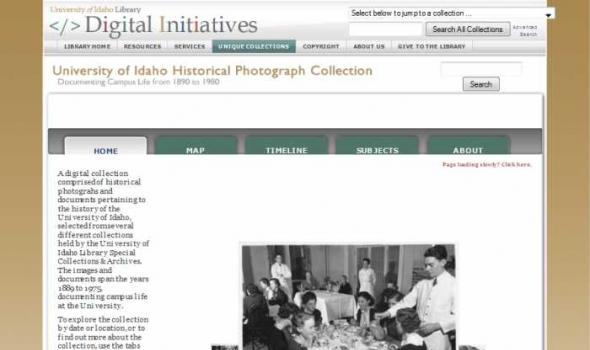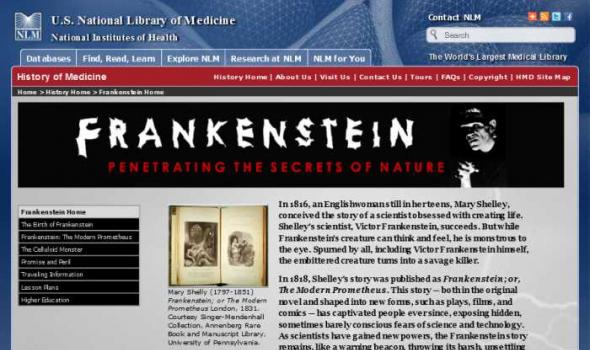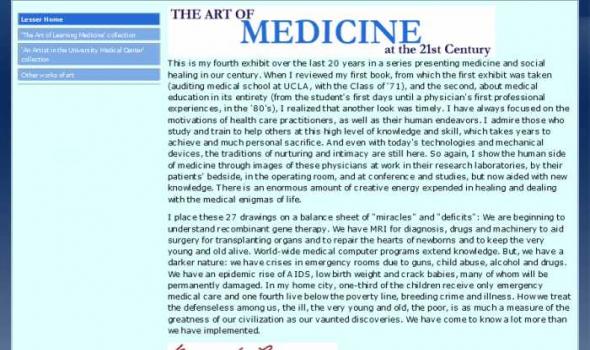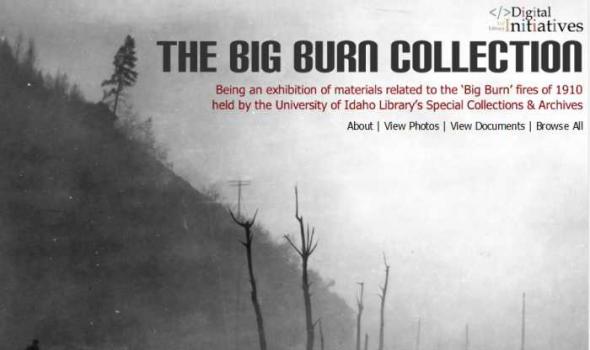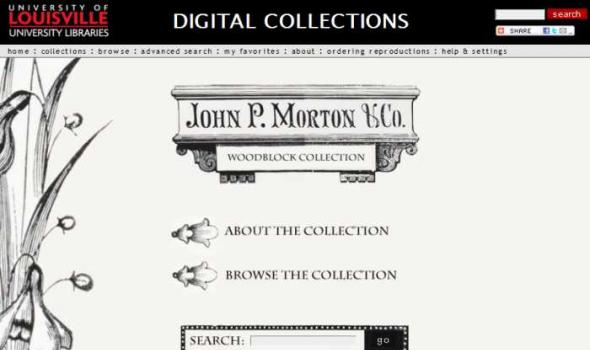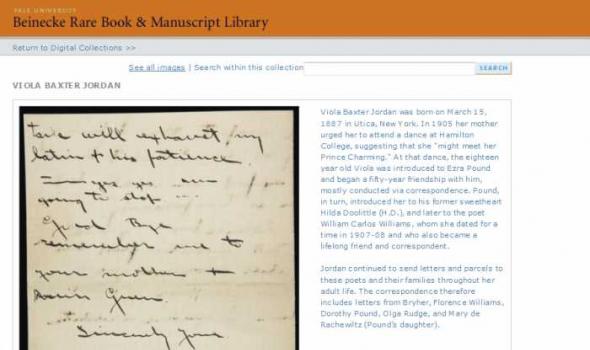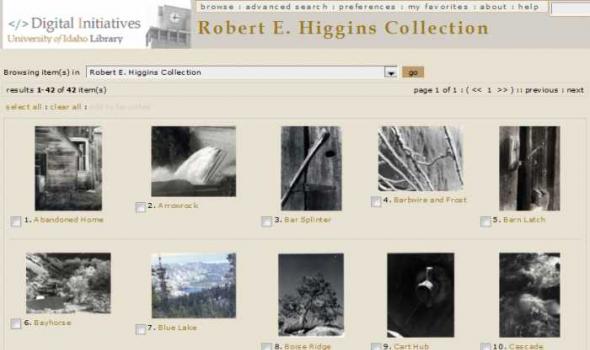Toronto Public Library
Toronto Orphanages and Day Nurseries Introduction In the early half of the nineteenth century, it was common practice for orphaned or deserted children to be bound into apprenticeships. By mid-century, adoption and institutional care began to emerge as alternatives to apprenticeship. Orphanages or children's "homes" and day nurseries provided residential care for children in need. By the 1920s, institutional care was gradually phased out and replaced by programmes of foster care, or "boarding out". Day nurseries evolved as the pre-cursor to daycare centres. Reports and Papers from Toronto's early child care agencies reflect society's evolving attitudes towards childcare and the work ethic from the mid-1800s to the early 1900s.
About the Collection If you love the performing arts, you'll want to visit the fifth floor of the Toronto Reference Library , home of the Performing Arts Centre . It's a diverse collection of material and services devoted to theatre, music, film, television and dance. This includes the Bill Glassco Collection of original manuscripts from Tarragon's founding director, and early scripts from some of Canada's leading playwrights. To see more of our theatre collection materials online check out these other virtual exhibits: Also, visit the Canadian Theatre Record which contains many items from the Performing Arts Centre. To explore other Toronto Public Library virtual exhibits, click here .
The Osborne Collection Toronto Public Library’s Osborne Collection of Early Children’s Books is one of the world’s foremost historical collections of English-language children’s literature. Located in the Lillian H. Smith branch , the Osborne Collection holds over 80,000 items, including manuscripts, books, book-related art, archives, ephemera and book-related games. Our collection ranges from a 14th-century manuscript of Aesop’s Fables through medieval books of manners, moral tales of the Puritan era, 18th-century chapbooks and hornbooks to Victorian classics of fantasy, adventure, and school stories up to 1910. We also collect modern notable books published after 1910.
About the collections All images come from the Special Collections Department , Toronto Reference Library, Toronto Public Library. This concludes our virtual exhibition on Fraternal Societies in Canada. Click on the links below to explore some of our recent virtual exhibits: Or click here to explore all the Toronto Public Library virtual exhibits.
Toronto Public Library’s Osborne Collection of Early Children’s Books is one of the world’s foremost historical collections of English-language children’s literature. Located in the Lillian H. Smith branch, the Osborne Collection holds over 80,000 items, including manuscripts, books, book-related art, archives, ephemera and book-related games.
Our holdings
Our collection ranges from a 14th-century manuscript of Aesop’s Fables through medieval books of manners, moral tales of the Puritan era, 18th-century chapbooks and hornbooks to Victorian classics of fantasy, adventure, and school stories up to 1910. We also collect modern notable books published after 1910.
Osborne includes:
Garden City: Public and Private Gardens in Early Toronto Early Toronto residents, politicians and local entrepreneurs transformed the City by creating public gardens and offering services and supplies to the gardening industry. As a result of their efforts, nineteenth century Toronto emerged as a more liveable community and a popular tourist attraction. By the late 1800s, guidebooks were referring to Toronto as the “Queen City”, the “Holiday City”, and the “ideal summer city”. In the fall and winter, city residents and visitors congregated for social events and recreation in churches, hotel dining rooms and concert halls.
Sidney Paget: Iconic illustrator of Sherlock Holmes 2010 marks the 150th anniversary of the birth of Sidney Paget (1860-1908), an illustrator closely associated with creating a visual identity for Arthur Conan Doyle’s character Sherlock Holmes. The lean, elegant Holmes Paget presented to readers of the Strand magazine worked beautifully with Conan Doyle???s text, and formed the basis for the image of Holmes that remains popular in the public mind to this day.
The First Black Doctor in Canada: Anderson Ruffin Abbott Anderson Ruffin Abbott was the first black Canadian doctor. Abbott and his family had a long history of contributing to the social life and economy of Toronto. Dr. Abbott’s father, Wilson Ruffin Abbott, was born in Richmond, Virginia, to a Scottish-Irish man and a free black woman in 1801. He left home at the age of 15 to work on a Mississippi steamer, and settled in Mobile, Alabama, where he opened a general grocery store. In 1834, the city of Mobile passed a writ requiring all free blacks to provide a bond signed by two white men as a pledge of good behaviour.
Panorama of the City of Toronto, 1857 Rossin House Hotel In 1857, the roof of the hotel provided the ideal vantage point from which Armstrong, Beere & Hime photographed their Toronto. The Rossin House, on the southeast corner of King and York streets, was the tallest building in the newer commercial district of Toronto when it opened that year. It was one of the city’s pre-eminent hotels, with an 1866 guide claiming: “What the Fifth Avenue Hotel is to New York, and the Windsor is to Montreal, so the celebrated Rossin House is to Toronto.” The Rossin House was destroyed by a fire in 1862, and was rebuilt in 1863.
Blessed with many ravines, wooded lots and parklands, early Toronto residents were able to enjoy many winter outdoor activies right in their own neighbourhoods. Sleighing, tobogganing, bobsledding, skating, curling, hockey, skiing and snowshoeing were all popular forms of winter recreation. As the city grew and prospered, clubs and associations formed, championships were organized and new facilities were built to meet the demand. Horse drawn sleighs were used to transport goods from farm to city stores in wintertime and wealthy businessmen had them in their stables. Toronto companies would occasionally decide to reward their employees by organizing group horse sleigh rides in High Park. Letter, 29 December 1883 Tobogganing became a popular sport in the late 19th century.
Royal Visits to Toronto. Toronto has hosted many royal visits. Anniversaries, fundraisers, conferences, athletic competitions and military duty are some of the events and occasions that royalty have celebrated or attended. These visits have included walkabouts and drive-bys that gave the public and media the opportunity to take photographs and catch glimpses of members of the royal family. George VI, visit to Toronto, 22 May 1939, at the King’s Plate, Woodbine (now Greenwood) Race Track, Queen St. E.
The National Game Long before hockey was played in Canada, the First Peoples of Canada played lacrosse. For them, lacrosse was both a religious ritual and a significant community activity. It prepared young men for war and, in some cases, a game of lacrosse between two tribes could resolve disputes or strengthen alliances. September 6, 1879, page 153 In the 19th century, lacrosse was adopted by the Europeans in Canada. It became an organized sport, where rules were established and clubs formed to embrace the game. Its popularity extended to communities in British Columbia, Alberta, Manitoba, Quebec and Ontario. >> Click on the numbers below to view 6 pages describing the rules of lacrosse.
Gone Fishin’ Torontonians have a long and happy tradition of heading north to cottage country during the long, hot days of summer. In the 1860s the Muskoka Club was established by a group of Toronto adventurers who led annual expeditions to the Muskoka wilderness. By the 1870s several of the members had purchased land on Lake Joseph, and the tradition of summer cottaging was born. In 1898 a group of professors and alumni from the University of Toronto joined together to purchase recreational property in Go Home Bay, on Georgian Bay, held as shares in the Madawaska Club. Many of the cottagers in Go Home are descendants of those first Madawaska Club members.
Introduction This virtual exhibit presents a small selection of items taken from the Osborne Collection’s sixtieth anniversary exhibit, When Cinderella Went to the Ball: Five Hundred Years of Fairy Tales , held from September 12 to December 12, 2009. Celebrating one of children’s literature’s most enduringly popular genres, the exhibit progresses from a fifteenth-century Venetian wonder tale ( Historia di Lionbruno , 1476), through “classic” stories and collections by Charles Perrault, the Brothers Grimm and others, to today’s spin-offs, spoofs and “post-modern” interpretations.
On July 1st, Canadians from coast to coast will proudly wave the red and white Maple Leaf flag. But how many are aware that the tradition started here, in Toronto? At the time of Confederation in 1867, the maple leaf as a symbol of Canadian patriotism was relatively new. At a public meeting in August, 1860, a group of Toronto citizens, planning for the upcoming Royal Visit of the Prince of Wales, decided to identify themselves as native-born Canadians by wearing a maple leaf. This leather badge was worn at the reception for the Prince of Wales held in Toronto on September 7, 1860. Although the maple leaf had previously been used as a symbol for Canada, this was the first occasion on which it was worn as a national emblem.
Toronto is celebrating its 175 th anniversary by engaging the community to a number of events. The city’s celebrations include museum tours, literary reading and book launches, music, art, festivals and a song competition. In celebration of this anniversary, Toronto Public Library invites you to explore Toronto's past with material from the Special Collections at the Toronto Reference Library. Click on each image below to explore. To learn more about the history of Toronto, explore these past exhibits: Also, check out the following two books from our Curator's Showcase : To search for more historical images of Toronto from our collections:
Introduction The 19 th century was a period of expansion and development in Canadian history. The century brought unprecedented change, from the Union of Upper and Lower Canada and the Confederation of the Canadian colonies, to the establishment of the western provinces. Fortifications and other military structures were erected and roads and railway networks constructed, ushering in waves of immigration as colonization and settlement pushed westward. In its wake the face of the Canadian landscape was altered, and to some extent the vast wilderness was diminished. In the era before the camera, artists, surveyors and engineers preserved on paper and canvas a record of the landscape.
Welcome to Local Flavour. This virtual exhibit surveys the various aspects of eating in Toronto over a span of 125 years. To turn the pages of Toronto's, click your mouse near the edge of the page to the right and then drag the mouse across to turn page. Or use the 'Next page' and 'Previous page' buttons at the top to flip through pages. You can also use the 'Go to page...' dropdown menu to quickly jump to any section of the exhibit.
The circus is a theatrical spectacle that is international in scope and appeals to all ages. With a cast of performers including acrobats and jugglers, aerialists, equestrians, clowns, wild animals and sideshows, the circus is the United Nations of popular entertainment. Thrilling to some and terrifying to others, it has the ability to overwhelm, delight and inspire. This exhibition features an array of images that range from the lavish and decorative designs of the late 19th century to the gritty social realism of the early 20th century. The photographs, posters, artist prints, illustrated books, and heralds from the Toronto Public Library’s collections bear witness to changing cultural values.
Discovery at your fingertips.... Come explore the Curator’s Showcase. We have digitized seven treasures from the Toronto Public Library’s rich and varied special collections, and added pictures, maps, notes and more. Using the Library’s interactive software, you can virtually turn the pages of the books. You can zoom in on the digitized images and also find related texts, images and sounds. Other features specific to individual books are provided, such as transcriptions of handwritten pages. This project was inspired by the British Library Turning the Pages program. To experience a touch sensitive version of the Showcase, visit the Special Collections Digital Kiosk at the Toronto Reference Library .
The Toronto Public Library (TPL) has long been committed to an active exhibition program for its Special Collections in the Canada Trust Gallery at the Toronto Reference Library. The virtual version of Footprints of the Hound recreates in part the exhibition on display in our Gallery from October 20 – December 2, 2001.
Introduction The Special Collections at the Toronto Reference Library reveal a wonderful diversity of focus, form, age and content. Together, they form a cultural legacy that began in the late nineteenth century with the opening of Toronto's first public library. They continue to grow through acquisition and donation to ensure that users today and tomorrow have free access to their cultural and literary heritage. From the humble to the exquisite, each item in the collection has been treasured and preserved, and its story maintained by the librarians of the Toronto Public Library. In celebration of the Toronto Reference Library's thirtieth year at 789 Yonge Street, we proudly present a special exhibition from these collected works.
Introduction The second half of the nineteenth century was a time of wealth, optimism and growth in Toronto. Architecturally, it was an era that would drastically change the appearance of Toronto forever. A small but dedicated number of architects would infuse Toronto’s landscape with a variety of structures, possibly, the most striking being the churches, with their soaring spires, ornate towers and other Gothic Revival attributes. This exhibition honours one of these architects, Henry Langley, and features the Toronto churches that he designed, built and completed. Henry Langley, 1836-1907, was born in Toronto. He obtained his architectural training by apprenticing for seven years with an established architect, Scottish-born, William Hay, 1818-1888.
Pictures came before books, printing or writing, and were our first expression of stories. The Canadian artist Marie Day celebrated the power of cave art in her picture book Quennu and the Cave Bear , an imaginative recreation of how a young girl of the Stone Age conquered her fear of a ferocious cave bear by drawing him. The Stone Age makes a fitting start to an exhibition celebrating Canadian picture books, within which there are no boundaries of place or time. In chronological terms, the earliest painting in this exhibit is 42, the latest, only three years old. The earliest artefact shown here is nearly 3,000 years old, and the story of Quennu depicts a period over 20,000 years ago.
Opera Atelier holds a unique place in the North American theatre community, producing opera, ballet and drama performances that draw upon the aesthetics and ideals of the 17th and 18th centuries. Featuring acclaimed international soloists, period ballet (Artists of Atelier Ballet), original instruments, elaborate stage décor, exquisite costumes and most importantly, an imaginative energy, Toronto-based Opera Atelier has attained international recognition.
Whether they are in the circus or the zoo, in the field, the stream or the air, on a dinner plate or an altar, animals have fascinated humanity from its earliest origins. Selected from Toronto Public Library’s rare books, original art and postcard collections, this survey features prints from Audubon’s Quadrupeds , images of wild and domestic animals as well as animals at play. Yes, animals are allowed in the library-roaming through thousands of pages, over hundreds of years.
Introduction From the time of Columbus, the American continent was seen by Europeans as a barrier between Europe and the Orient. A passage through it was the prime object of many voyages of exploration. Magellan had sailed around South America in 1520, but the icy northern shores were mysterious and seemed unassailable. The search for a sea route across the top of North America began in the 16th century as a commercial venture sponsored by London merchants. By the 19th century it was obvious that a Northwest Passage would not be a useful seaway, but finding it became an obsession, as did the attainment of the North Pole late in the century.
Foreword The Group of Seven style of painting captured the rhythm and mood of the nation???s landscape. From Algonquin to Algoma, Lake Superior to the Rocky Mountains, Quebec to Nova Scotia, the artists traveled in search of the quintessential Canadian landscape painting. Armed with canoes, boards and paints, they interpreted the chaotic mass of nature in a bold, modern approach that differed from the Academic convention. To finance their expeditions, many of the artists worked in commercial art firms, designing illustrations, advertisements and elegant illuminated texts.
Rt. Hon. Arthur Meighen, address to the Senate, September 10, 1939. In September 1939, Canadians prepared for another war with memories of the Great War still fresh in their minds. It was determined that Canada’s war effort would be concentrated in financial and industrial support, and the first priority would be to secure the nation’s borders. By the spring of 1940, the progress of the war in Europe had changed dramatically. With the German invasion of Denmark, Norway, Belgium and Holland, and the fall of France, Canadians reassessed their own vulnerability. The spectre of a German victory became real.
Kabuki is a performing art that combines music, dance, pantomime, song, drama and comedy. In the early 1600s kabuki emerged from traditional Japanese classical theatre and puppet show traditions, incorporating elements of both.
While classical plays are quiet, refined and slow-paced, kabuki is full of spirited action and outsized emotions. Kabuki plays portray characters from Japanese history, legend and folk tales. Great heroes, beautiful princesses, evil spirits, loyal retainers, vengeful warriers and benevolent lords populate the stage. These stories have continued to grip the Japanese imagination, embodying as they do the much-valued ideals of loyalty, courage and strength.
